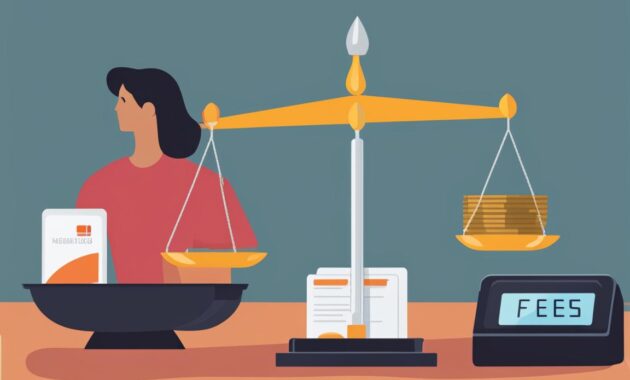How to balance transfer credit card : Are you struggling with credit card debt and looking for effective strategies to manage it? One solution you should consider is a balance transfer credit card. By transferring your credit card balances to a 0% interest balance transfer card, you can consolidate your debts and reduce your interest rates, ultimately improving your financial health.
Transferring your credit card balances to a single account can simplify debt management and minimize interest rates. However, it’s important to understand the concept of 0% balance transfer credit cards and choose the right card for your needs. There are risks and considerations to keep in mind, including hidden costs and qualifying criteria. With careful planning and adherence to best practices, you can successfully consolidate your credit cards and enjoy the benefits of balance transfers.
Key Takeaways:
- Balance transfer credit cards offer a way to consolidate credit card debt and reduce interest rates.
- Understanding 0% balance transfer credit cards is essential for effective debt consolidation.
- Choosing the right card requires consideration of introductory interest rates and balance transfer fees.
- Risks and considerations include potential penalties and the interest rate after the introductory period.
- Balance transfers come with hidden costs like balance transfer fees and potential traps.
Understand 0% Balance Transfer Credit Cards
Owning multiple credit cards can often lead to a tangled web of debts and a struggle to keep up with varying interest rates, minimum payments, and payment dates. However, there is a solution to simplify debt management and reduce interest costs – 0% balance transfer credit cards.
So, what exactly are 0% balance transfer credit cards? These are credit cards that offer an introductory period with 0% interest on balance transfers. By transferring all your credit card balances to one account, you can consolidate your debts and potentially save a significant amount of money on interest payments.
By understanding the concept of 0% balance transfer credit cards, you can take advantage of this strategy to effectively manage your credit card debt. It’s important to note that these introductory periods typically have a specific duration, ranging from a few months to a couple of years, during which you won’t be charged any interest on the transferred balance.
It’s crucial to consider the terms and conditions of these credit cards, such as the length of the 0% interest period, any balance transfer fees, and whether the 0% interest applies to both balance transfers and new purchases. Comparing different credit cards can help you find the right one that suits your financial goals and enables you to consolidate your debts more efficiently.
Advantages of 0% Balance Transfer Credit Cards:
- Consolidate multiple credit card balances into one account
- Simplify debt management
- Minimize interest rates during the introductory period
- Streamline payments and avoid missing payment dates
By taking the time to understand how 0% balance transfer credit cards work, you can make informed decisions about managing your debts and improving your financial health. In the next section, we will discuss how to choose the right balance transfer credit card for your needs.
Choosing the Right Card

When it comes to balance transfer credit cards, choosing the right one is essential. It’s important to consider factors such as introductory interest rates, the duration of the 0% interest rate period, and whether it applies to balance transfers, new purchases, or both. By shopping around and comparing different credit cards, you can avoid paying high-interest rates on new purchases while enjoying the benefits of 0% interest on balance transfers.
Comparing Introductory Interest Rates
One key consideration when choosing a balance transfer credit card is the introductory interest rate. This is the rate charged on the balance you transfer to the new card for a specific period, usually ranging from 6 to 18 months. Look for credit cards that offer the longest introductory period with the lowest or 0% interest rate. This will give you more time to pay off your transferred balance without incurring additional interest charges.
Understanding Balance Transfer Fees
In addition to the interest rate, it’s important to consider any balance transfer fees associated with the credit card. Some credit card companies charge a fee, typically a percentage of the balance being transferred, to process the transfer. While this fee can vary, it’s important to factor it into your decision-making process. Look for credit cards with lower or no balance transfer fees to minimize the overall cost of transferring your balance.
By carefully considering these factors and comparing different credit cards, you can choose the right balance transfer credit card that suits your financial needs. Remember to read the terms and conditions, including any fine print, before making a decision. This will ensure that you fully understand the terms of the credit card and can make an informed choice that will help you save money and manage your debt effectively.
Risks and Considerations
When considering a balance transfer, it’s important to be aware of the potential risks and considerations. While balance transfers can be an effective strategy for managing credit card debt, there are certain factors to keep in mind to make an informed decision.
High-Risk Borrower and Credit Checks
It’s worth noting that frequent balance transfers can raise red flags for credit card issuers. Transferring balances too often can label you as a high-risk borrower in credit checks, potentially affecting your credit score. It’s important to carefully evaluate your financial situation and consider the impact of balance transfers on your creditworthiness.
Interest Rate After Introductory Period
Most balance transfer credit cards offer an introductory period with a 0% interest rate. However, it’s essential to understand the interest rate that will apply once this period ends. In some cases, the ongoing interest rate may be higher than what you were paying on your original credit card. Thoroughly review the terms and conditions of the balance transfer card to ensure you are comfortable with the post-introductory period interest rate.
Penalty Fees
In addition to the interest rate, it’s crucial to familiarize yourself with any potential penalty fees associated with the balance transfer card. Late payment fees or fees for exceeding the credit limit can add to your overall debt if not managed properly. Be aware of these fees and consider whether they outweigh the benefits of the balance transfer.
By understanding the risks and considerations involved in balance transfers, you can make an informed decision that aligns with your financial goals. It’s essential to assess your own creditworthiness, evaluate the interest rate after the introductory period, and determine the potential impact of penalty fees. Taking these factors into account will help you navigate the balance transfer process more effectively and avoid any unforeseen financial pitfalls.
The Hidden Costs of Balance Transfers

While balance transfers can be an effective strategy for managing credit card debt, it’s important to be aware of the hidden costs associated with this process. One of the most common fees that credit card companies charge for balance transfers is the balance transfer fee. This fee is typically a percentage of the amount being transferred and is added to the total balance on the new card. It’s crucial to consider this fee, especially for individuals carrying a large debt, as it can impact the overall cost of the transfer.
Avoiding the 0% introductory rate trap is another aspect to keep in mind when considering balance transfers. Many credit card companies offer an enticing 0% introductory rate on balance transfers. However, it’s important to carefully review the terms and conditions to understand how long this rate will last. Once the introductory period ends, the interest rate could increase significantly, potentially offsetting the initial benefits of the transfer.
To make an informed decision, comparing credit cards that offer low-interest rates for a longer period may be a better option than falling for the 0% introductory rate trap. By opting for a card with a longer low-interest rate period, individuals can have more time to pay off their debt without worrying about a sudden increase in interest charges.
Table: Comparison of Balance Transfer Fees
| Credit Card | Balance Transfer Fee | Introductory Interest Rate Period |
|---|---|---|
| Card A | 3% | 12 months |
| Card B | 5% | 6 months |
| Card C | 1% | 18 months |
As shown in the table above, different credit cards may have varying balance transfer fees and introductory interest rate periods. It’s essential to consider these factors and choose the card that aligns with your financial goals and repayment capabilities.
When navigating the world of balance transfers, it’s crucial to be aware of the hidden costs involved. By carefully evaluating the balance transfer fee, avoiding the 0% introductory rate trap, and comparing credit cards, individuals can make informed decisions to effectively manage their credit card debt.
Steps to Consolidate Credit Cards

Consolidating credit cards through balance transfers can be an effective strategy for managing debt. However, it is important to approach this process carefully and consider several factors.
Interest Rates
When comparing balance transfer credit cards, pay close attention to the interest rates they offer. Look for cards with a low or 0% introductory rate for balance transfers. This will allow you to save on interest charges and focus on paying down your debt.
Minimum Balance Requirements
Before initiating a balance transfer, be sure to check the minimum balance requirements set by the new credit card issuer. Ensure that you can meet these requirements to avoid any penalties or additional fees.
Penalties
Understand the penalties that may apply if you fail to make timely payments or don’t adhere to the terms of the balance transfer. These penalties can include an increase in interest rates or the loss of the promotional 0% APR. Familiarize yourself with the terms and conditions of the new credit card to avoid any surprises.
Debt Consolidation and Budget
Consolidating your credit cards through balance transfers is a form of debt consolidation. As part of this process, it is crucial to create a budget that allows you to comfortably manage your debt repayment. Take the time to assess your income, expenses, and debt obligations to develop a realistic budget that aligns with your financial goals.
By carefully considering these factors and taking the necessary steps, you can effectively consolidate your credit cards and work towards improving your financial health.
Benefits of Balance Transfers

Balance transfers offer numerous benefits for individuals looking to efficiently manage their credit card debt. One of the key advantages is the ability to cut down on interest expenses by taking advantage of 0% interest rates during the introductory period. By consolidating multiple credit card balances onto one card, individuals can streamline their payments, enhance organizational efficiency, and reduce the risk of missing due dates. This can provide a sense of relief and control over their financial situation.
By transferring their balances to a single card with a lower interest rate, individuals can save a significant amount of money that would have otherwise been spent on high-interest charges. This can accelerate their journey towards becoming debt-free and improving their overall financial health.
Furthermore, balance transfers can help individuals simplify their financial management. Instead of juggling multiple due dates, minimum payments, and interest rates, consolidating all debts onto one card allows for a more streamlined approach to repayment. This can reduce the chances of missing payments and incurring late fees or penalties, ultimately helping individuals regain control over their finances.
“Balance transfers provide an opportunity to consolidate credit card debt and take advantage of lower interest rates. By simplifying payments and reducing interest expenses, individuals can regain control over their financial situation and work towards becoming debt-free.”
| Benefits of Balance Transfers |
|---|
| 1. Cut down on interest expenses |
| 2. Streamline payments and enhance organizational efficiency |
| 3. Simplify financial management |
It is important to note that while balance transfers can be highly beneficial, they require responsible financial behavior and discipline. It is crucial to create a repayment plan and stick to it, ensuring that the transferred balances are paid off within the introductory period. This will help individuals avoid higher interest rates that may apply after the introductory period ends.
Overall, balance transfers can be a valuable tool for individuals seeking to efficiently manage their credit card debt. By cutting down on interest expenses, streamlining payments, and improving organizational efficiency, individuals can take significant steps towards achieving financial stability.
Creditworthiness and Approval Process
Qualifying for a balance transfer credit card requires meeting specific eligibility criteria set by the issuing bank. One of the most crucial factors is creditworthiness, which is determined by your credit score. A higher credit score increases the likelihood of approval for a balance transfer card, as it demonstrates a reliable history of responsible credit card use.
Before applying for a balance transfer, it’s important to understand the eligibility criteria of credit card issuers. Each bank may have different requirements, such as a minimum credit score or income level. Some issuers may also consider factors like your debt-to-income ratio or employment status.
The approval process for a balance transfer credit card typically involves submitting an application and providing information about your financial situation. The bank will review your application and credit history to assess your creditworthiness and determine whether to grant you a balance transfer option. It’s important to note that even if you meet the eligibility criteria, approval is not guaranteed.
By understanding the importance of creditworthiness, having a higher credit score, and familiarizing yourself with the approval process and eligibility criteria, you can increase your chances of qualifying for a balance transfer credit card. This can be a valuable tool for consolidating your credit card debt and improving your financial situation.
| Credit Card Issuer | Minimum Credit Score | Income Requirement | Debt-to-Income Ratio |
|---|---|---|---|
| ABC Bank | 700 | $30,000/year | Less than 40% |
| XYZ Bank | 650 | $25,000/year | Less than 35% |
| DEF Bank | 680 | $35,000/year | Less than 45% |
Execution of a Balance Transfer
Executing a balance transfer requires meticulous planning to ensure a smooth consolidation of your credit card debt onto a new card with more favorable terms. Here are the key steps to follow:
- Determine the transfer cost: Before initiating a balance transfer, calculate the transfer cost, which is often a percentage of the amount transferred. Ensure that this cost is manageable and aligns with your debt repayment goals.
- Check available credit line: Verify that the balance you intend to transfer does not exceed the available credit line on the new card. It is crucial to consider the credit limit of the new card to avoid any complications during the transfer process.
- Plan meticulously: Take the time to assess your credit card balances and prioritize transferring those with the highest interest rates. By focusing on high-interest debts, you can maximize the potential savings from the transfer.
- Consolidate your debt: Once you have identified the balances you want to transfer and have confirmed the transfer cost and available credit line, proceed with the balance transfer. Follow the instructions provided by the card issuer to complete the transfer process.
By following these steps, you can consolidate your credit card debt onto a single card with more favorable terms, helping you save on interest and simplify your debt repayment journey.
Understanding Credit Card Balance Transfers
Understanding credit card balance transfers involves moving outstanding balances from one card to another, often with a lower interest rate. This can save money on interest payments and simplify debt management. Consider transfer fees, introductory rates, and the new card’s terms. Careful evaluation of the terms and repayment plans is essential to make informed decisions and use balance transfers as an effective debt management strategy.
Best Practices for Using Balance Transfers
When utilizing balance transfers to manage credit card debt, it is essential to follow certain best practices to ensure successful debt repayment and financial progress. By implementing these strategies high-interest credit card, individuals can make the most of their balance transfer credit cards and avoid common pitfalls.
Plan for Paying Off Debt
Before initiating a balance transfer, it is crucial to create a comprehensive plan for paying off the transferred debt within a specific timeframe. This involves setting clear goals and establishing a realistic budget transfer amount to allocate funds towards debt repayment. By having a structured plan in place, individuals can stay focused and motivated towards becoming debt-free.
Watch Out for Tricks and Traps
While balance transfers can be beneficial, it is important to be aware of potential tricks and traps that some credit card companies may employ. One example is deferred interest, where interest accumulates during the introductory period and is retroactively applied if the balance is not paid off in full by the end of the promotional period. It is crucial to read the terms and conditions carefully and understand any potential risks before committing to a balance transfer.
Additionally, be cautious of balance transfer checks that may be treated as cash advances, incurring higher interest rates and additional fees. It is advisable to avoid making new credit purchases while utilizing balance transfers to prevent further debt accumulation and maintain progress towards debt repayment.
Stay Committed to Debt Repayment
Successful utilization of balance transfers requires discipline and commitment to the debt repayment plan. It is essential to stick to the budget, make regular payments, and avoid missing due dates. By staying committed to the debt repayment journey, individuals can gradually eliminate their credit card debt and improve their overall financial well-being.
In conclusion, balance transfers can be a valuable tool for managing credit card debt, but it is important to approach them with caution and follow best practices. By planning for debt repayment, being vigilant of potential tricks, and staying committed to the repayment plan, individuals can effectively utilize balance transfers to regain control of their finances and work towards a debt-free future.
Conclusion
Balance transfers can be a strategic move in the financial balance transfer game to manage credit card debt effectively. However, achieving success requires a strong sense of discipline and careful consideration of the various factors involved. One crucial element is maintaining high credit scores, as they open doors to the best balance transfer benefits.
By understanding the risks and implementing best practices, individuals can leverage balance transfers to their advantage. It’s important to create a clear plan for paying off the transferred balance within a specific timeframe, avoiding any tricks that may lead to unexpected costs or additional debt. Additionally, maintaining discipline by refraining from new credit purchases while utilizing balance transfers is essential for long-term financial stability.
In conclusion, balance transfers offer a valuable opportunity to consolidate credit card debt and improve financial health. However, it is crucial to approach this method with a clear understanding of the risks involved and a commitment to responsible financial management. With the right strategies and a focus on maintaining high credit scores, individuals can navigate the balance transfer process to achieve their financial goals.
Also Read : Find Your Best Business Travel Credit Card Today!
FAQs
A: A balance transfer credit card allows you to transfer the balance from one credit card to another, often at a lower interest rate, helping you save money on finance charges.
Q: How does a balance transfer work?
A: When you initiate a balance transfer, the new card issuer pays off the old card’s balance, and then you’re responsible for paying off the new card at the terms agreed upon in the balance transfer offer.
Q: How can I apply for a balance transfer?
A: You can apply for a balance transfer by completing a balance transfer request through the new card issuer. This can usually be done online, over the phone, or through a paper form provided by the issuer.
Q: What are the benefits of transferring a credit card balance?
A: Transferring a credit card balance can help you pay off your debt faster by taking advantage of lower interest rates and reducing the overall cost of carrying a balance.
Q: What factors should I consider when choosing a balance transfer credit card?
A: When selecting a balance transfer credit card, consider the length of the introductory 0% APR period, the ongoing APR after the introductory period ends, balance transfer fees, and any other perks or rewards offered.
Q: Can I transfer a balance from one credit card to another multiple times?
A: Yes, you can transfer a balance from one credit card to another multiple times, but keep in mind that each transfer may be subject to balance transfer fees and may impact your credit score.
Q: What are some tips for using a balance transfer to pay off debt faster?
A: To make the most of a balance transfer, focus on paying off the balance within the promotional 0% APR period, avoid making new charges on the old card, and create a repayment plan to pay off the transferred balance as quickly as possible.
Q: How does a balance transfer affect my credit score?
A: A balance transfer may initially have a small negative impact on your credit score due to the new credit inquiry and potential changes in credit utilization. However, over time, it can help improve your credit score by reducing overall debt and improving credit utilization.
Q: What should I do after completing a balance transfer?
A: After completing a balance transfer, review your credit report to ensure the old card’s balance has been paid off, and make timely payments on the new card to avoid any negative impact on your credit score.
Q: Are there specific credit score requirements to qualify for a balance transfer card?
A: While specific requirements vary by issuer, balance transfer cards generally target individuals with good to excellent credit scores, typically defined as scores above 670. However, some issuers may offer options for those with fair credit as well.
Source Links
- https://moneynation.com/balance-transfer-17-tips-tricks-mastering-credit-card-balance-transfers/
- https://naterar.medium.com/mastering-the-art-of-credit-juggling-your-ultimate-guide-to-0-balance-transfer-cards-e26b2e779c07
- https://www.sarkariexam.com/mastering-balance-transfer-credit-cards-understanding-usage-and-eligibility/500881
